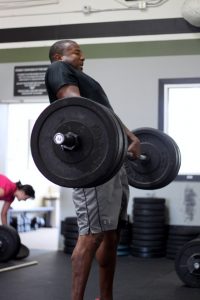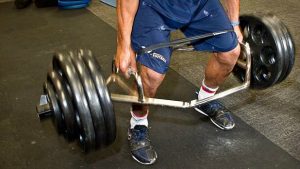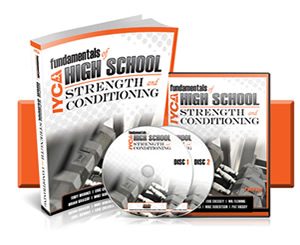Power/explosiveness is one of the most important attributes a strength & conditioning professional (SCP) can develop in an athlete. One of the most important decisions the SCP can make is how power development will be accomplished in his/her program. For years, coaches have debated over the need for Olympic lifting to develop power.
Proponents of Olympic lifting cited huge power outputs and the importance of power being generated with high force production, or against high external loads. Loading the triple extension in an “athletic” movement like an O-lift was a staple of many programs.
On the flip side, other coaches cited the huge power outputs generated from plyometric exercises and saw no need to teach their athletes “another sport” as part of their training. These coaches discussed the difficulties of teaching such complex movements to young athletes or large groups, and felt like unrestricted movements (like jumping, sprinting, etc.) were much more “athletic” than O-lifts.
For a long time, SCP’s dug their heels in and defended their positions.
Fortunately, the debate may be over. Both coaches and researchers have found that, while Olympic lifting produces huge power outputs, there are alternatives that produce just as much power and are easier to teach. We’ve also found that bodyweight movements are a critical piece of the puzzle for many athletes.
It seems that a combination of methods is the key to developing a complete power production profile in athletes.
Several years ago, researchers found that the mid-thigh clean pull (without a catch), produced the highest power outputs of any Olympic lifting variation (Comfort et al 2011). This sparked more investigation and others found that both the hex power pull and weighted squat jump (weight held at the side or with weighted vests) also produced power outputs higher than full cleans or snatches (Swinton 2011), and allowed athletes to develop power against higher loads than just plyometrics.
Here is a video of a high pull from the floor. The mid-thigh clean pull would simply start from the hang position instead of from the floor.
Here is an example of a hex bar (or Trap Bar) high pull:
The research certainly did not show that Olympic lifts were bad or unhelpful. Not even close. In fact, the mid-thigh clean had very high power outputs as well, showing that it is a very viable method of generating power. While the full clean from the floor had lower power outputs than other variations, it still generated A LOT of power and is a good alternative for certain athletes and coaches.
At the same time, the research has found that unloaded exercises develop a slightly different kind of power needed for athletes who don’t have to produce power against an external resistance, i.e. sports that require athletes to move other athletes.
British researcher Paul Comfort recently started showing that different power alternatives should be used for different parts of the power continuum (light/unloaded up to very heavy/loaded movements) and has suggested that using combinations of light, medium and heavy movements may create the most complete “power profile.” (Comfort 2017) He has also suggested that coaches remember the principle of specificity, and use loads that most closely resemble the requirements of the sport. For example, a track athlete may not have much of a need for high external loads, while a football lineman has a much higher need for these variations.
 For the coach who considers Olympic lifting dangerous or isn’t skilled at the intricacies of teaching them, the weighted squat jump, mid-thigh clean pull, power shrug and hex bar pulls offer excellent alternatives to full O-lifts. These exercises are typically much easier to teach athletes because they do not require the catch phase of the lifts.
For the coach who considers Olympic lifting dangerous or isn’t skilled at the intricacies of teaching them, the weighted squat jump, mid-thigh clean pull, power shrug and hex bar pulls offer excellent alternatives to full O-lifts. These exercises are typically much easier to teach athletes because they do not require the catch phase of the lifts.
For Olympic lifting aficionados, it appears as though adding some bodyweight plyometrics and moderately resisted (about 50% of a clean 1RM) exercises may help round out their athlete’s power profile. These coaches may also want to use the mid-thigh clean pull or hex bar pulls for their heavy work because weights above the clean 1RM can be used, and they offer less risk if a heavy attempt is “missed.”
The bottom line is that we need to open our minds to everything that’s available and have a thorough understanding of how to develop athletes. Whether you choose to use Olympic lifts or not, you must understand the needs of each athlete and address them in the most appropriate way possible. After all, training isn’t about US, it’s about doing what’s right for the athlete’s you have the honor of working with.
 Jim Kielbaso is the President of the IYCA and Director of the Total Performance Training Center in Wixom, MI. He has authored multiple books, articles and training products and has spoken at events around the world. He holds a BS in Exercise Science, an MS in Kinesiology and has gone through multiple certifications through the IYCA, NSCA, NASM and more. Jim is a former college strength & conditioning coach and has trained thousands of athletes at every level of competition. He runs a successful NFL Combine training program in Michigan and has been hired as a consultant for major sports programs like the University of Michigan Football Program and the University of Kentucky Basketball Program.
Jim Kielbaso is the President of the IYCA and Director of the Total Performance Training Center in Wixom, MI. He has authored multiple books, articles and training products and has spoken at events around the world. He holds a BS in Exercise Science, an MS in Kinesiology and has gone through multiple certifications through the IYCA, NSCA, NASM and more. Jim is a former college strength & conditioning coach and has trained thousands of athletes at every level of competition. He runs a successful NFL Combine training program in Michigan and has been hired as a consultant for major sports programs like the University of Michigan Football Program and the University of Kentucky Basketball Program.
The IYCA High School Strength & Conditioning Specialist is the only certification created specifically for coaches training high school athletes. The course includes several hours of video instruction and two textbooks with contributions from some of the top strength and conditioning coaches in America. Click on the image below to learn more about how to become a certified high school strength & conditioning coach.


